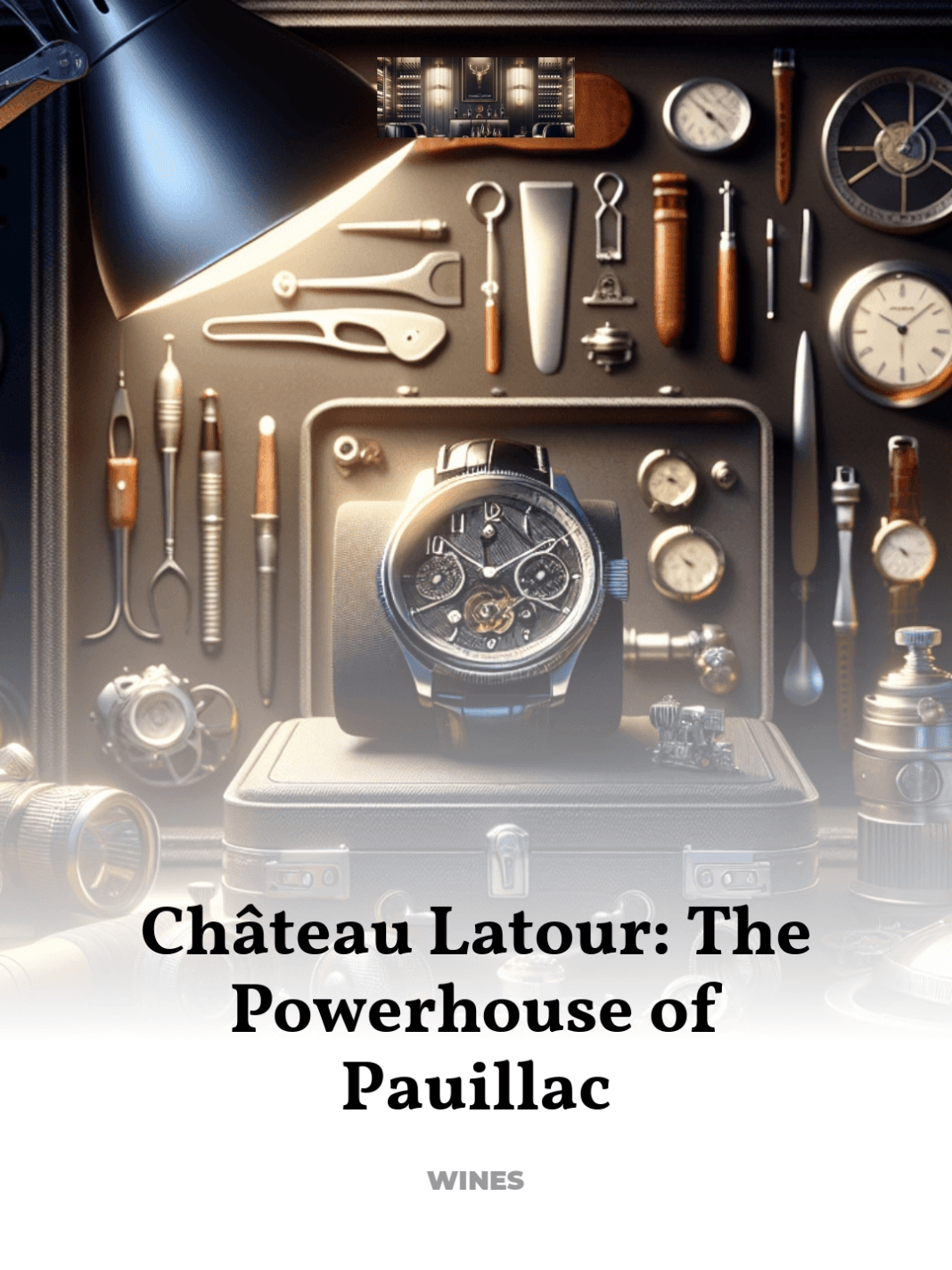How this First Growth is Known for Its Strength and Longevity
Château Latour, a venerable icon nestled in the heart of Pauillac, epitomizes the pinnacle of vinicultural excellence and heritage. This esteemed estate, with its deep roots in history and an unwavering commitment to quality, stands as a beacon of strength and longevity in the world of fine wines.
- The Storied History of Château Latour
- Masterful Viniculture: The Secret to Latour’s Longevity
- Iconic Vintages and Their Legacy
- Architectural Majesty of Château Latour
- Cultural Impact and Symbolism in Luxury
- Connoisseurship: Appreciating Latour’s Craftsmanship
The Storied History of Château Latour
The origins of Château Latour trace back to the 14th century, though it rose to prominence in the 17th century when it became recognized as a model of winemaking perfection. The estate’s name, derived from the iconic tower built in 1620, symbolizes both its defensive past and its enduring presence in the Bordeaux wine landscape.
Château Latour was classified as one of the original First Growths in the Bordeaux Wine Official Classification of 1855, an accolade that attests to its consistent quality and prestige. This classification set the stage for Latour’s legacy as a leader in crafting wines of exceptional longevity and robustness.
Key Figures in Latour’s History
- Ségur Family – Under their stewardship in the 18th century, Château Latour flourished, establishing its foundation as a powerhouse in Pauillac.
- André Lurton – His modernization efforts in the late 20th century propelled Latour to new heights, emphasizing sustainable practices and technological advancements.
Masterful Viniculture: The Secret to Latour’s Longevity
Château Latour’s exceptional longevity can be attributed to its precise and meticulous vineyard management and winemaking techniques. The estate’s prime location on the banks of the Gironde estuary provides an ideal microclimate and geology, which, when combined with their conservative harvesting strategies, results in grapes of optimal ripeness and balance.
The vinification process at Latour is characterized by an uncompromising attention to detail. From the careful selection of oak barrels to the controlled fermentation temperatures, every step is designed to enhance the natural qualities of the wine.
Innovations in Winemaking
- Organic Viticulture – Embracing organic practices, Latour focuses on sustainability and respect for the terroir.
- Gravity-Flow Winemaking – This technique ensures minimal intervention, preserving the integrity and purity of the fruit.
Iconic Vintages and Their Legacy
Château Latour’s reputation is also built on its remarkable vintages that have captivated wine enthusiasts and collectors worldwide. Notable years such as 1961, 1982, and 2000 showcase the estate’s ability to produce wines that not only reflect the character of the vintage but also possess a remarkable capacity for aging.
Each of these vintages stands as a testament to Latour’s mastery over its craft, with the 1961 vintage, in particular, being heralded as one of the greatest wines ever made. These wines are celebrated for their complexity, structure, and depth, which evolve beautifully over decades.
Characteristics of a Landmark Vintage
- Depth and Complexity – Layers of flavor that reveal themselves over time.
- Balance and Harmony – A perfect alignment of acidity, tannin, and alcohol.
- Longevity – The potential to age gracefully, developing nuanced characteristics.
Architectural Majesty of Château Latour
The architecture of Château Latour is as much a part of its identity as its wines. The iconic tower, originally part of a fortification, symbolizes the château’s historical significance and enduring legacy. The estate’s buildings blend functional winemaking spaces with aesthetic splendor, reflecting its status as a monument of French cultural heritage.
Visitors to Château Latour are often struck by the harmonious blend of tradition and innovation, as historical structures stand alongside state-of-the-art facilities designed for precision winemaking.
Preservation and Innovation
- Historical Preservation – Maintaining the integrity of the estate’s historical architecture while adapting to modern needs.
- Innovative Design – Incorporating advanced technologies seamlessly into the traditional framework.
Cultural Impact and Symbolism in Luxury
Château Latour transcends the realm of winemaking to become a symbol of luxury, heritage, and craftsmanship. Its wines are perceived not just as beverages but as cultural artifacts that carry the richness of their terroir and the legacy of their craftsmanship.
The château’s commitment to excellence resonates within the luxury community, where it is celebrated not only for its superb products but also for its role in promoting French craftsmanship and luxury on a global scale.
Latour in the World of Luxury
- Symbol of Prestige – Château Latour is often associated with exclusivity and status in social and professional settings.
- Commitment to Craftsmanship – The meticulous care in the vineyard and winery reflects a broader cultural appreciation for artisanal skill and dedication.
Connoisseurship: Appreciating Latour’s Craftsmanship
Understanding and appreciating the depth of Château Latour’s offerings requires a refined palate and a deep appreciation for the nuances of fine wine. Connoisseurs and collectors around the world cherish Latour for its complexity, elegance, and the sheer pleasure it delivers with each bottle.
Whether enjoyed in the quiet of a private cellar or as the centerpiece of a lavish gathering, Château Latour remains a definitive expression of the art of French winemaking.
Engaging with Château Latour
- Tasting Events – Exclusive events that offer deep dives into the château’s portfolio.
- Winery Tours – Guided tours that explore the rich history and innovative practices at the heart of Latour.
For further exploration into the world of Château Latour, consider visiting authoritative sources such as the estate’s official website or respected wine publications.



